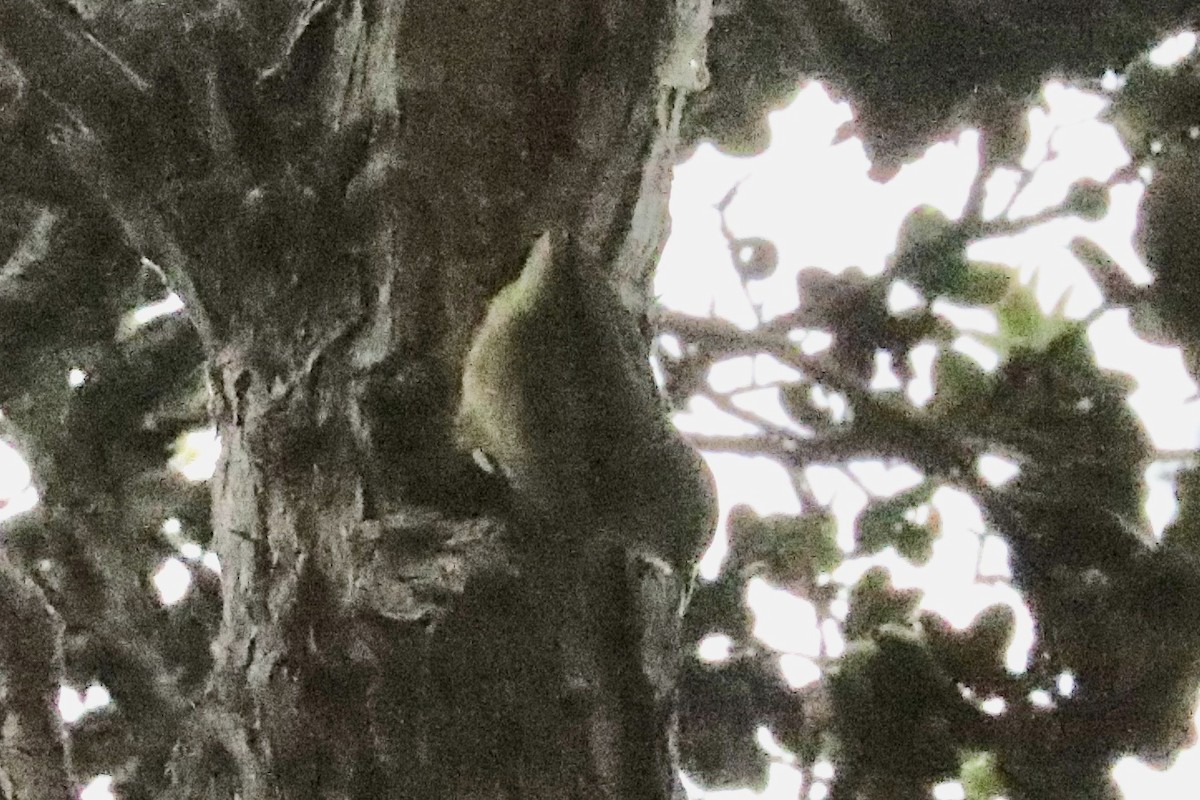Hawaii Creeper
A species of Akepas and allies Scientific name : Loxops mana Genus : Akepas and allies
Hawaii Creeper, A species of Akepas and allies
Botanical name: Loxops mana
Genus: Akepas and allies
Content
Description General Info
 Photo By Steve McInnis
Photo By Steve McInnis Description
The Hawaiʻi creeper, Hawaii creeper or ʻalawī (Loxops mana) is a species of Hawaiian honeycreeper endemic to the Big Island of Hawaiʻi. Its natural habitats are dry forests and montane moist forests at elevations of 1,000–2,300 metres (3,300–7,500 ft). There are a total of 12,000 birds separated into three populations. A fourth population on the western part of the island probably represents migratory birds from one of the existing population. The Hawaiʻi creeper measures 4.5 inches (11 cm) and has drab green plumage. In 2017 the traditional Hawaiian name was rediscovered as 'alawi'. 
Size
8 - 13 cm
Nest Placement
Tree
Feeding Habits
Hawaii Creeper predominantly consumes insects and nectar. It employs precise foraging techniques to extract prey from bark crevices, exhibiting a preference for arthropods. This bird's specialized bill aids in probing, while it also adapts seasonally to available floral resources.
Habitat
Hawaii Creeper predominantly inhabits montane wet and mesic forests, primarily residing at elevations between 700 to 2,100 meters. These habitats generally feature a canopy dominated by native 'öhi'a or koa trees, which are crucial for providing nesting and foraging opportunities. Although hawaii Creeper favors old-growth forests for optimal population densities, they can also occupy disturbed woodlands with a sufficient presence of large trees.
Dite type
Insectivorous
General Info
Feeding Habits
Bird food type
Species Status
The Hawaiʻi creeper was put on the endangered species list in 1975; however, it was unknown whether the bird was uncommon or endangered [1]. Although this species has been put into full view of habitat degradation, it has been able to reproduce, so this not thought to be a serious problem to this species. It has also been found in lower elevations in areas like the common ʻamakihi and apparently handles the diseases better than other species just like it. Introductions of alien animals however have caused this bird to be put under pressure. This pressure includes the bird having competition for food. The other pressure is the fact that these birds are being eaten by rats which cause the populations to drop very quickly. The nests of the Hawaiʻi creepers are low to the forest floor which leave the bird to vulnerable to predators such as rats [2] The species is eaten as eggs, chicks, and even as full-fledged adults. Now its northern population is being protected in the same area as is the ʻakiapolaʻau and other native birds: Hakalau Forest National Wildlife Refuge. It is threatened by disease and habitat loss. Also, the Hawaiʻi creeper has probably benefited from the conservation of other endangered birds in Hawaii [3] 

 Photo By Steve McInnis
Photo By Steve McInnis Scientific Classification
Phylum
Chordates Class
Birds Order
Perching birds Family
Finches Genus
Akepas and allies Species
Hawaii Creeper